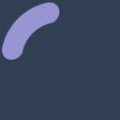

If your glaucoma eye drops don’t seem to be working, it could mean your eye pressure has changed—or your routine needs adjustment. Learn the signs and what to do next to protect your vision.
For many people living with glaucoma, daily medicated eye drops are the first, and sometimes only, line of defense to protect vision. But what happens if they stop working as well as they used to?
In this article, based on expert guidance from Healthline, we’ll go over how glaucoma eye drops work, signs they may not be effective, and what you can do to stay in control of your treatment plan.*
If you’ve ever wondered whether your drops are doing their job, or if you’ve struggled to keep up with your routine, you’re not alone, and your eye care team can help.
Glaucoma causes gradual damage to the optic nerve, often due to high pressure inside the eye (intraocular pressure, or IOP). Eye drops help control that pressure, slowing disease progression and helping prevent vision loss.
Depending on the type your doctor prescribes, drops work by:
These medications can be highly effective, but they only work if used consistently and correctly, often every day, sometimes more than once per day, for life.
🩺 Important: Even if you don’t notice symptoms, keep using your drops exactly as prescribed. Stopping treatment without your doctor’s guidance can lead to irreversible vision loss.
Your doctor might prescribe one or more of these common types:
Sometimes, combination drops are used for better results and easier routines.
Even if you’ve been taking your drops faithfully, there are times when they may not control your eye pressure as effectively. Common signs include:
Because glaucoma often has no obvious symptoms until vision loss occurs, regular checkups are the only reliable way to know if your treatment is still working.
👁 If you notice changes in your vision or symptoms, schedule an appointment with your ophthalmologist right away.
Sometimes, it’s not that your eye drops stop working — it’s that they’re not being used correctly or consistently. And that’s more common than you might think.
Studies suggest that nearly half of glaucoma patients don’t take their eye drops exactly as prescribed. Common reasons include:
If you relate to this, you’re not failing your treatment — you just need support. Talk to your care team about practical fixes, like:
💬 As one review explained, “nonadherence is more common than doctors realize.” Speaking up about challenges helps your care team tailor treatment to your real life.
If tests show your eye pressure isn’t under control, or if you’re noticing vision changes, your doctor may recommend:
Glaucoma drops play a crucial role in preserving your vision, but they need regular follow-up and teamwork between you and your doctor.
If you ever feel that your drops aren’t working, don’t wait until symptoms worsen. Reach out to your eye care team to review your treatment plan. And if you’re struggling with the daily routine, talk openly. There are always ways to make it easier.
* Healthline (August 28, 2025). “How Do You Know If Glaucoma Eye Drops Aren’t Working?” healthline.com
To ensure that we always provide you with high-quality, reliable information, The Glaucoma Community closely vets all sources. We do not, however, endorse or recommend any specific providers, treatments, or products, and the use of a given source does not imply an endorsement of any provider, treatment, medication, procedure, or device discussed within.
Source: {{articlecontent.article.sourceName}}
Receive daily updated expert-reviewed article summaries. Everything you need to know from discoveries, treatments, and living tips!
Already a Responsum member?
Available for Apple iOS and Android
Add Comments
Cancel